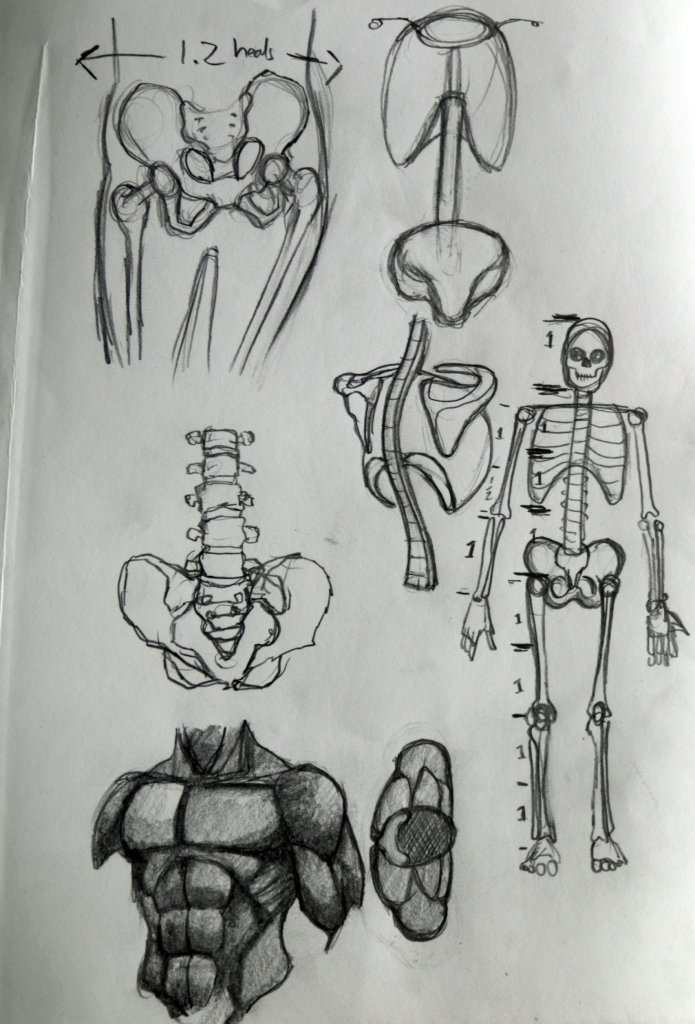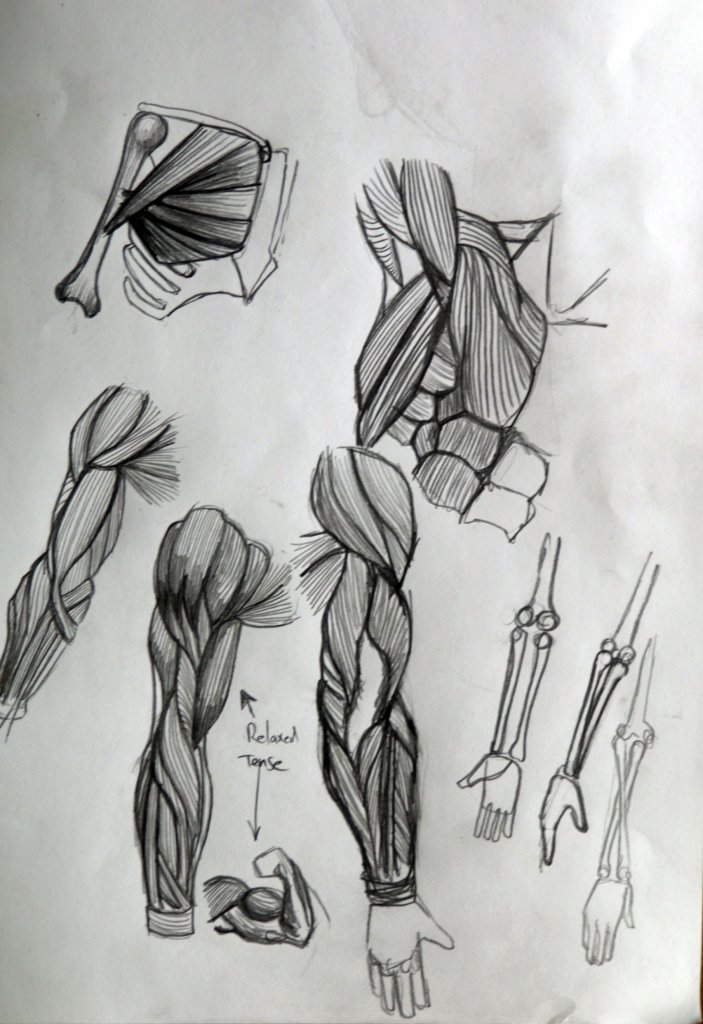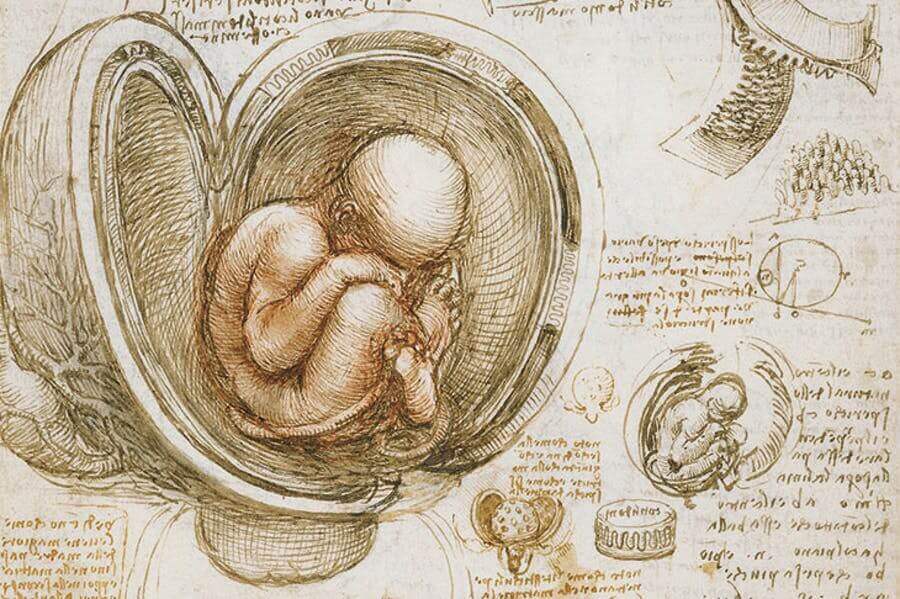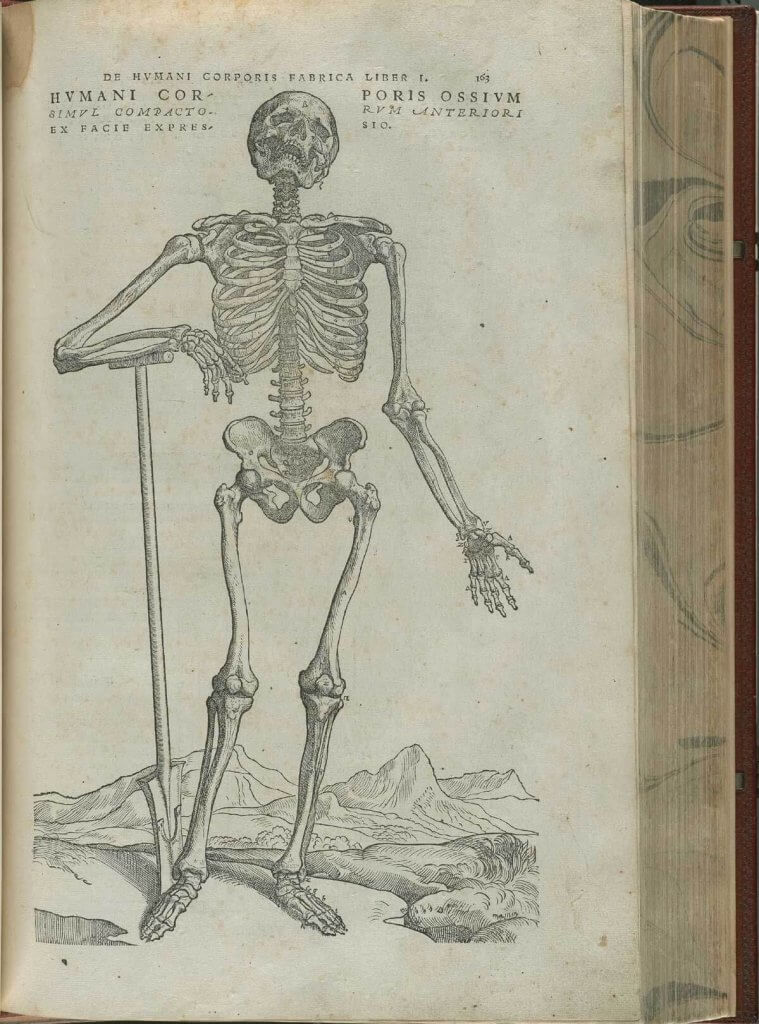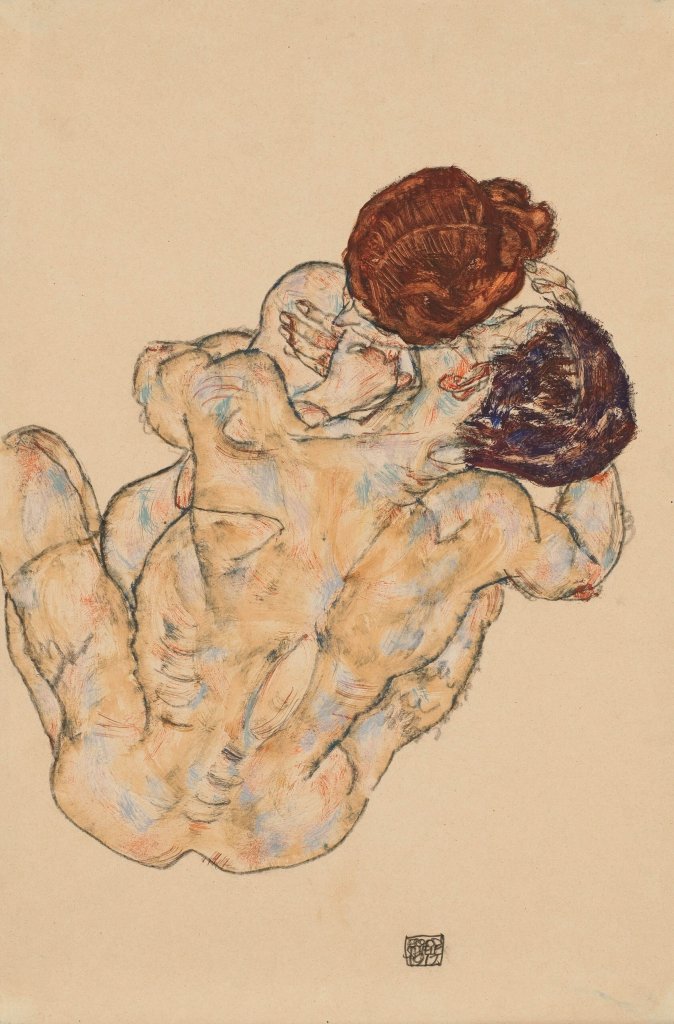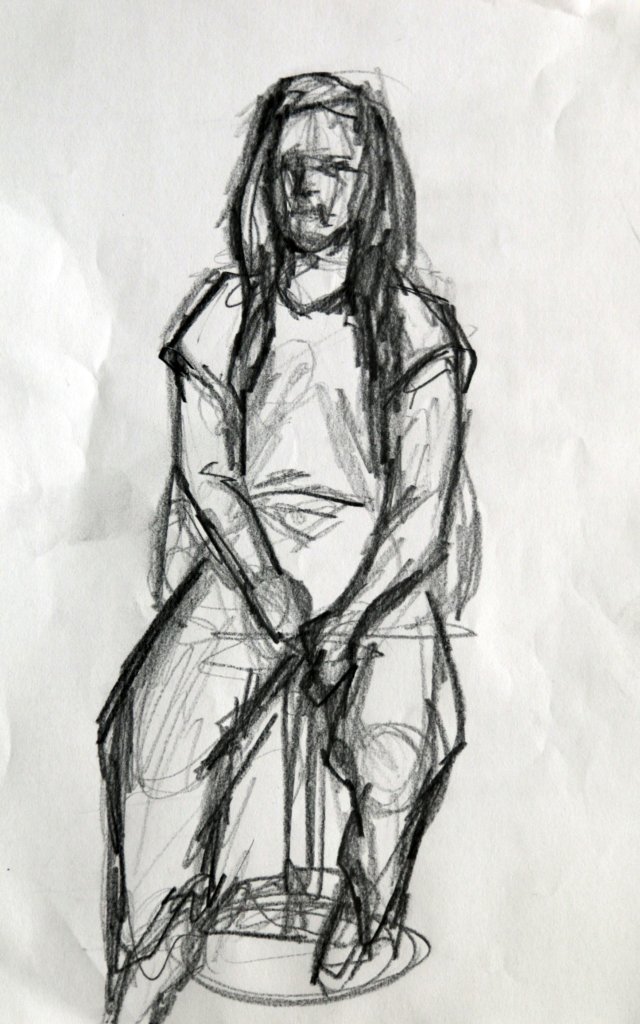I used this exercise to get a greater understanding of not only the shape and form of the body parts but their function as a mechanical object. I tried to cover the whole body and picked out some of the more complicated structures and their relation to each other not only in position but size also.
Research point: The underlying structure of the body
When I first read the text for this research point I immediately thought Leonardo DaVinci, I’ve seen incredibly detailed exploratory sketches involving the human body and he certainly is the most well known, but thats not what research is about, I want to discover some new artists who study the body. I decided I would do some investigation and look into several historic and contemporary artists who’s style resonated with me.
Leonardo DaVinci 1452 – 1519
As I mentioned above the first artist who sprung to mind was Leonardo. He was not only an artist but also a student of anatomy, astronomy, botany, cartography, and palaeontology. As you can imagine he was a naturally curious person, and longed for understanding of the curiosities of the world.
Andreas Vesalius & Jan van Calcar
I have had to put two names down for this entry, as the author seems to have left the artists name uncredited. Andreas Vesalius was a anatomist and physician, he was alive between 1514 – 1564 he will often come up when you search for anatomical drawings, he was the author of the “De humani corporis fabrica libri septem” a series of illustrated books comprised of in depth anatomical drawings. The Illustrations are believed to be the work of German born, Jan van Calcar, they are actually very detailed woodcuts. The work while being intended as descriptive really is quite delicate and beautiful, offering a strong style, the work posing the skeletal subjects in day to day ordinary poses.
Egon Schiele
I was really quite taken by the works of Egon Schiele when I researched the changing nude, you only have to look at his work to see that beneath the exaggerated and distorted figures in Schiele’s work is a thorough understanding of anatomy, particularly in terms of bone structure.
Jenny Saville
Any fans of the Manic Street Preachers, will already be familiar of Jenny Savilles work. She works at a very large scale with broad strokes of colour. The overweight figures she paints cited to have been the result of watching a surgeon perform liposuction procedures gave her a greater understanding and influenced the way she approached the human body. The hard structures of the body draped in the softer jelly like fat layers meticulously described in her images.
Nunzio Paci
I stumbled upon Nunzio Paci while searching for Jenny Saville, and I’m very pleased I did. His images feel like they are almost vandalised anatomy books. The detailed anatomical drawings are embellished with a secondary drawing, normally botanical in nature.
Exercise 2: Three figure drawings
This exercise required me to complete three drawings with different tools ;
- Standing, I chose brush pens and chisel markers
- Seated, this drawing used charcoal
- Lounging, I chose oil pastel for this image (mainly because I found my set and wanted to experiment)
I carried out 2 sketches for each larger image, I have found this useful for several reasons, it helps to understand the figures form, its mass/force distribution highlight any weakness in the pose and composition, I think it also serves up as a warm up or a dummy run, going through the motions once or twice before the main piece of work seems to inform your approach
Standing
Using a brush pen I marked out the pose, taking consideration of the subjects stance and where the balance was distributed, the left side of her hip turned upwards and her leg bent supporting her mass with a slight forward lean. I had a stubby Pentel chisel marker, I really like these markers, they are quite expensive and I tend to keep them past their prime, they take on a nice scrubby feel leaving a broken texture, the last of the wet ink clings tightly to the dry felt head, the pen squeaking in pain as its head is dragged against the paper. It means that I can get a mid tone from the black ink, and I like the effect.
Seated
I thought I’d give charcoal a whirl again. It is imprecise and messy in my hands, but thats probably due largely to my lack of exposure to the medium. Again I was happy with the way I had captured the pose, the weight of the model shifted to her right side, her right leg anchored to the floor. As I had expected the image was starting to get a little muddy, I decided to pause there and seal the drawing, unfortunately the lacquer seemed to react strangely with the paper, the lacquer picked up the pigment and made some water colour like wet edges. it also took the more delicate marks on the face and washed it into one grey tone. Im not sure what caused this, too heavy with the fixative or maybe the paper and charcoal had created a barrier that made the fixative pool on top. I did try to fix the drawing with a white conte crayon but it didn’t seem to make it much better. I decided to leave it as is and put it down as a lesson.
Lounging
Again I was pleased with the pose and the way I captured the figures lean and relaxed arms versus the strong triangular shape of the legs. The oil pastel was thick, the large A2 sized paper allowed me to add a little more detail in, I would like to complete a drawing with oil pastel at a larger A1 size, just to see how far I could push the detail with the stubby greasy stick.
I worked tonally, using a grey pastel to mark the subject and than adding in darker and lighter tones with black and white oil pastels, I like the way the pastel acts as a blender as it passes over a neighbouring marks space, I tried to use this to sculpt and render the shapes such as the arms and legs, following the rounds and flats of the subject on to the paper, pulling and curving the pigment to delineate the desired form.




